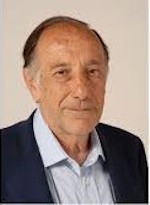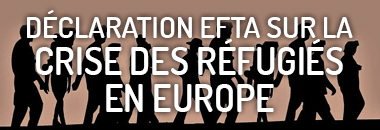EUROPEAN FAMILY THERAPY ASSOCIATION
CONNECTING FAMILY THERAPISTS AND TRAINERS
Luigi Cancrini
(1938) Psychiatrist and psychotherapist with psychoanalytic and systemic training

Maria Laura Vittori: I enjoy having the freedom to take you to a wonderful town in Italy, Ravello, sitting on the Amalfi coast, one of the UNESCO world heritage sites. Please follow me to Villa Rufolo, the place where Wagner had his inspiration to write his Parsifal. It was May 2000, and everything in Villa Rufolo shone with unparalleled beauty. We were there attending an event organized by the CSTFR (Centro Studi di Terapia Familiare e Relazionale) directed by Luigi Cancrini, trying to reason about Bateson, to resonate with Bateson. We were exploring a way to stay together enlightened by Bateson, helped by great thinkers. Luigi Cancrini gave his speech in a masterly way: he started a conversation in his mind with Edgar Morin’s thoughts, as well as with Giuseppe Longo’s and Enzo Tiezzi’s who had all talked before him, so that he imbued them with his own originality. It was great. At night, a dinner party took place. I was lucky to have a seat across from Luigi, while his wife, Francesca, was sitting close by him, with their little daughter next to her. It was a wonderful night and the food tasted delicious. What I remember more than anything else was the conversation we had. Luigi could not help watching his gorgeous wife, with shining eyes, asking me “Isn’t she lovely? Look at her, isn’t she beautiful?”. Then he would have a sip of wine or a morsel of food, would be silent for some minutes, and, smiling, he would ask me again “Isn’t she wonderful? Look at her, isn’t she a real beauty?”. Later there would be another round, and then another again. How I appreciated the dinner! How I appreciated Francesca’s beauty! Overall, that night I appreciated the sweetness of love.
Please take note of the year, because it will be important after my reasoning: it was 1995 and I was being trained to become a trainer in family therapy. My mentor was Luigi Cancrini and I can say that every day there was at least one meaningful intellectual and clinical adventure. I remember so many interventions in the therapy room, so many interventions about trainees, I could write a treatise, if my pen were good enough to do justice to that richness. Today, I want to share with you one such experience: it was one of the last days of June and Rome was hot. A suffering family was in the therapy room: a euphoric young man with his preoccupied parents, the three of them very loud. The trainee seemed lost. Luigi entered the room and helped them to find their deep reasons to behave the way they did. Everyone had enough time to talk and to be listened to. Everyone calmed down. Luigi got out of the therapy room and told me “I smell differently when I work with families. Very very differently. I think it is all about something ancestral. A response of mine which comes through an ancestral path”. Please remember, it was 1995 and it was only in 1996 that Rizzolatti published his study about the premotor cortex, the recognition of motor actions and the automatic response to others’ actions. More years passed before the notion of therapists’ embodied emotions in therapy would be taken for granted and unintentional responses be studied. However, as far as I know, no one has thought of something as profound as assessing a therapist’s senses. That is how geniuses work: they foresee, they have kinds of precognition, they are lightening in the dark.



